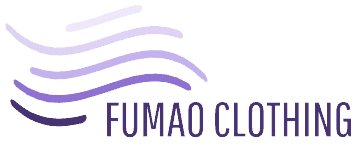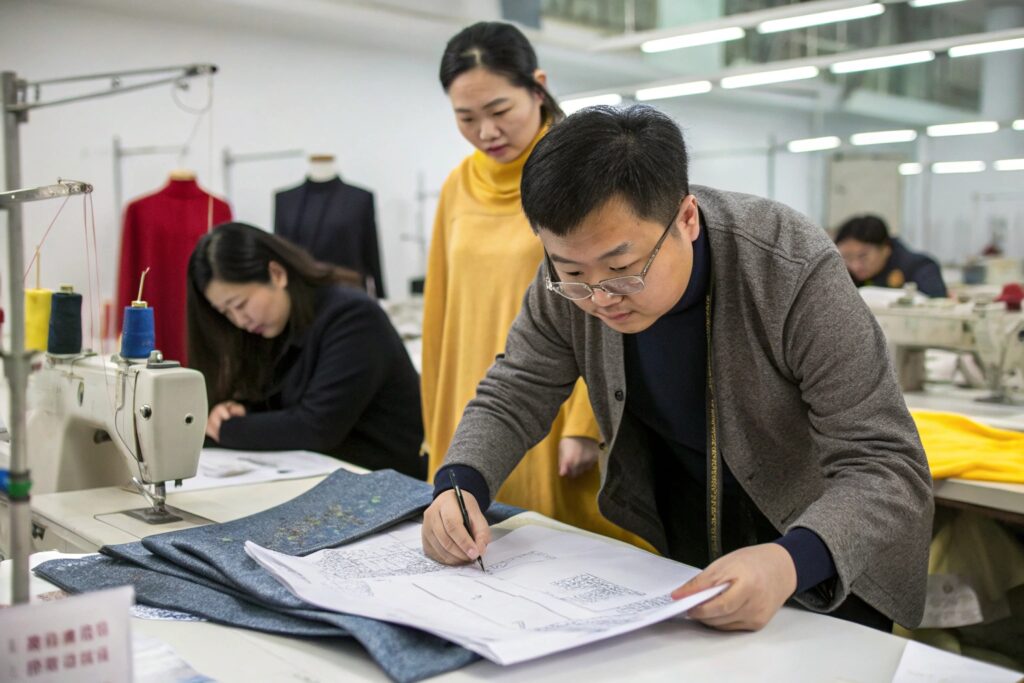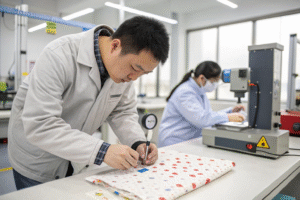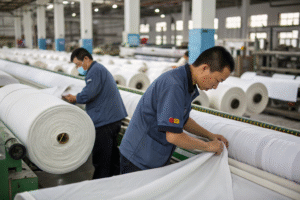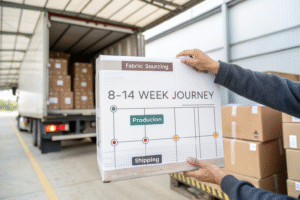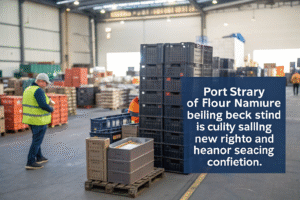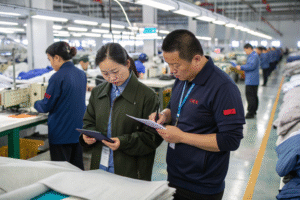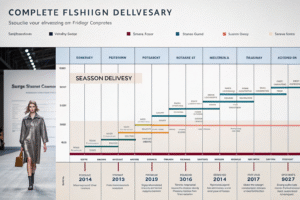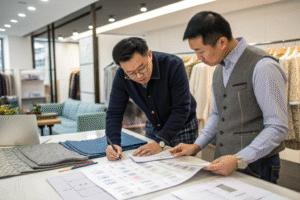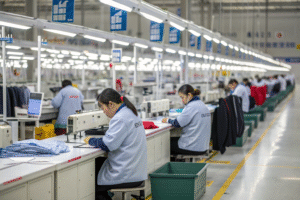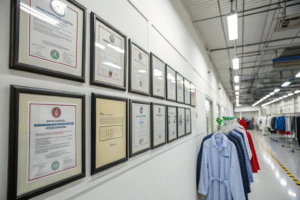Choosing the right manufacturer is one of the most important decisions a clothing brand will make. Whether you're launching your first drop or scaling up globally, a full-service clothing manufacturer can help turn your ideas into finished garments—with less risk, fewer delays, and higher quality.
A full-service clothing manufacturer offers end-to-end production solutions, including design support, pattern making, fabric sourcing, sampling, sewing, quality control, labeling, and shipping.
Let’s explore what these manufacturers do, who the major players are, where they operate, and how to choose the right partner for your fashion brand.
Who are the biggest clothing manufacturers?
The fashion industry runs on large-scale production—and behind many popular brands are global factories capable of producing millions of garments each year.
The biggest clothing manufacturers include Shenzhou International, Foxconn (for wearables), TAL Group, Esquel, and MAS Holdings—serving global brands like Nike, Uniqlo, and H&M.
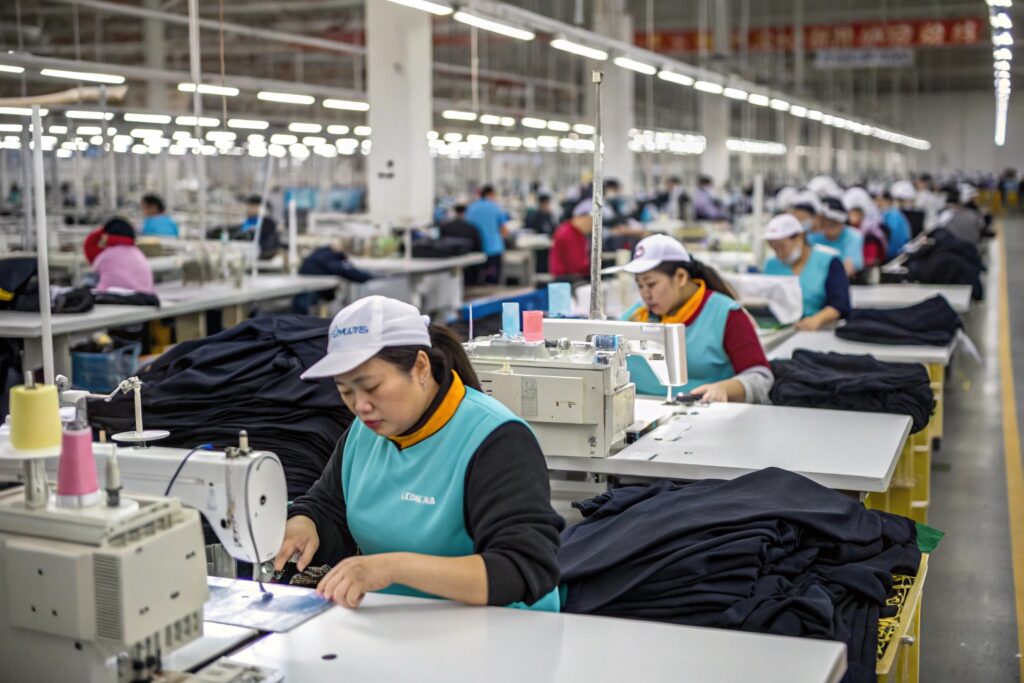
Who are the top manufacturing companies?
| Manufacturer Name | Headquartered In | Notable Clients | Capacity Level |
|---|---|---|---|
| Shenzhou International | China | Nike, Adidas, Uniqlo | Over 200M pcs/year |
| MAS Holdings | Sri Lanka | Victoria’s Secret, Calvin Klein | High-end lingerie |
| Esquel Group | Hong Kong | Tommy Hilfiger, Hugo Boss | Premium shirting |
| TAL Group | Hong Kong | Brooks Brothers, JCPenney | Dress shirts & suits |
| Crystal International | Hong Kong | Gap, Levi’s, H&M | Wide range of apparel |
These manufacturers excel in scale and efficiency1. But they may not be suitable for new or niche brands due to high minimum order quantities (MOQs) and long timelines.
At Fumao, we support small to mid-sized brands2 by offering full-service production with lower MOQs and custom design support.
What makes a full-service factory3 different?
Full-service manufacturers provide:
- Design input and tech pack support
- Pattern creation and grading
- Fabric sourcing from trusted mills
- Sampling and prototyping
- Bulk sewing and QC
- Private label finishing
- Packing and global shipping
This model gives brands a single point of contact for the entire process—ideal for reducing miscommunication and speeding up delivery.
Who makes Full Send clothing?
The popular “Full Send” clothing line, launched by the Nelk Boys, has become a massive merch brand. But who actually produces the clothes?
Full Send apparel is manufactured by third-party private label partners, often using premium blanks that are screen printed, tagged, and packaged under the Full Send brand.

Is Full Send using custom production or blanks?
Most likely, they use:
- Premium blanks4 from trusted U.S. manufacturers (like LA Apparel or Bella+Canvas)
- Custom screen printing5, embroidery, or patches
- Private label tags and packaging
This is a common setup for influencer-led brands. It allows for faster launches, lower upfront investment, and more flexibility in style drops.
| Production Element | Common Partner Type |
|---|---|
| Blanks (hoodies, tees) | U.S. premium blank suppliers |
| Printing | Contract screen print shop |
| Labeling & Fulfillment | White-label fulfillment partners |
While not confirmed publicly, many influencer brands follow a hybrid model6—blanks for some drops, full custom cut-and-sew for limited runs.
Which country is best for clothing manufacturing?
Every country has strengths—cost, quality, speed, or sustainability. The best country depends on your brand’s specific goals.
China, Vietnam, Bangladesh, India, and Turkey are among the best countries for clothing manufacturing—offering scale, skilled labor, and efficient logistics.

How do countries compare?
| Country | Strengths | Best For |
|---|---|---|
| China | Full-package production, infrastructure | All categories, especially sportswear |
| Vietnam | Consistency, high compliance | Mid-premium brands |
| Bangladesh | Ultra-low cost, high volume basics | T-shirts, denim, kidswear |
| India | Natural fibers, embroidery, small runs | Boho, artisan, cotton brands |
| Turkey | Proximity to Europe, fast fashion | Quick turnaround, EU brands |
| USA (LA) | Ethical production, low MOQ | Streetwear, startup brands |
For U.S.-based brands, sourcing from Latin America (Mexico, Honduras) offers faster shipping and access to tariff-free trade zones7 under CAFTA and USMCA.
At Fumao, we help clients compare price, timeline, and MOQ across regions before choosing a country.
What is a clothing manufacturer called?
Clothing manufacturers go by different names depending on their services, scale, and business model. But they all share the same goal: turning your designs into real garments.
A clothing manufacturer is commonly referred to as a cut-and-sew factory, full-package producer, or apparel production partner.

What are the different types of clothing manufacturers?
| Term | Description |
|---|---|
| Cut-and-Sew Factory8 | Assembles garments from pre-cut fabric |
| Full-Package Provider (FPP)9 | Handles everything from fabric to shipping |
| OEM Manufacturer | Produces according to your design |
| Private Label Supplier | Adds your brand to pre-made garments |
| CMT Manufacturer | Cut, Make, Trim (you provide patterns/fabric) |
At Fumao, we operate as a flexible FPP/OEM manufacturer10, supporting brands from concept to completion—whether you have a tech pack or just an idea.
Conclusion
A full-service clothing manufacturer doesn’t just make clothes—it builds brands. Whether you're looking to scale, launch a new line, or upgrade your supplier, finding a partner that offers comprehensive services, transparency, and flexibility is key to long-term success in fashion.
-
Understanding scale and efficiency can help you optimize production processes and improve profitability. ↩
-
Explore how full-service manufacturing can empower smaller brands to compete effectively in the market. ↩
-
Learn about the advantages of full-service factories and how they streamline the production process for brands. ↩
-
Understanding premium blanks can help you appreciate the quality behind influencer brands like Full Send. ↩
-
Explore the world of custom screen printing to see how it enhances brand identity and product uniqueness. ↩
-
Learn about the hybrid model to understand how brands balance cost and creativity in their product offerings. ↩
-
Understanding tariff-free trade zones can help brands optimize costs and logistics in international trade. ↩
-
Learn about Cut-and-Sew factories and how they can efficiently assemble garments from pre-cut fabric. ↩
-
Discover the role of Full-Package Providers in managing the entire clothing production process, from fabric sourcing to shipping. ↩
-
Explore this link to understand how flexible FPP/OEM manufacturers can streamline your clothing production process. ↩
